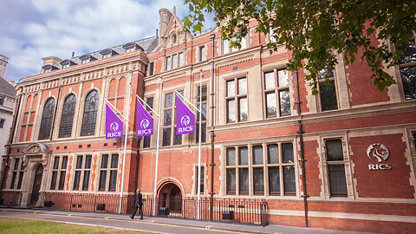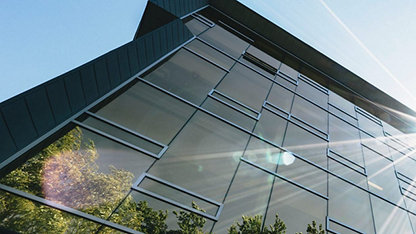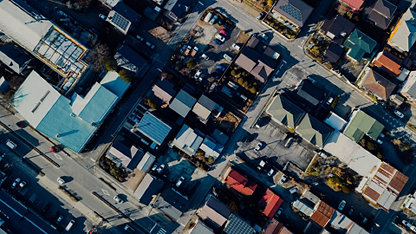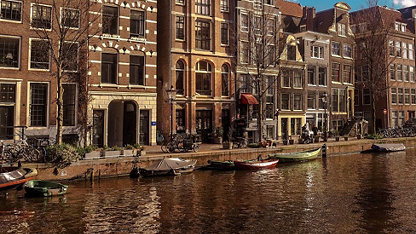RICS COP28 Case Study
Decarbonising the Built Environment
Introduction
In Australia, Laing O’Rourke focuses on delivering transport infrastructure projects (predominantly rail and road); defence infrastructure; buildings at the transport interface; and exploring opportunities in renewable energy and sectors.
Our highly trained and committed people understand the challenges of modern construction, the stakeholders involved, and how to work collaboratively to deliver our clients' aims.
In 2021, Laing O’Rourke set its Global Sustainability Strategy, acknowledging the need to think differently, look to new technologies and collaborate more closely with the supply chain to deliver on the commitment to build a sustainable future. Cornerstone targets include achieving operational net zero by 2030, gender parity by 2033 and becoming a net zero company before 2050. The work underway in our pursuit of net zero is a clear articulation of our purpose.
The sustainability outcomes driven by concrete innovations at the South Eastern Program Alliance (SEPA), of which Laing O’Rourke is a partner, demonstrate the compatibility between developing low-carbon materials and lean designs and meeting client needs with excellent results.
Project overview
SEPA consists of Laing O’Rourke, Jacobs, Metro Trains Melbourne and the Level Crossing Removal Project (LXRP) in Victoria, Australia. As part of the state’s Big Build programme, SEPA is delivering a series of level crossing removals to disentangle road and rail systems at hazardous and congested intersections.
In such models, the partner businesses are rewarded for operating under a set of performance measures that include innovation and collaboration. Cost penalties are shared among all teams, meaning high performers are incentivised to boost the performance of others.
Among the projects already delivered by SEPA are the Toorak Road, Hallam Road, Manchester Road and Maroondah Highway Level Crossing Removals and Cranbourne Line Upgrade, with four more level crossing removals currently underway across Surrey Hills, Mont Albert, Croydon and Ringwood, as well as the South Dynon Train Maintenance Facility Upgrade.
Challenges
Building and construction activities account for 39% of global energy-related carbon dioxide emissions.
When we break that down, for Laing O’Rourke specifically, over 95% of the business’ emissions are ‘Scope 3,’ or resulting from the activities of assets owned by external entities. Of this, purchased materials are the largest subcategory of carbon emissions with ~60% attributable to concrete and ~30% to steel. These statistics highlight the major challenge in influencing the emissions incurred by the manufacturing of construction inputs without direct control of the supply chain’s practices.
Consistent with Laing O’Rourke’s profiling, the team at SEPA identified concrete to be a major contributor of embodied carbon emissions, as large volumes are required for the delivery of extensive piling works across the alliance. There arose the task: how was the team going to decarbonise its rail-under-road solutions given the prominence of concrete in design, without compromising the durability of the finished product or its compliance with Victoria’s stringent specifications?
Solutions and success factors
The answer to mitigating ‘Scope 3’ emissions at SEPA lay in leveraging the alliance’s collaborative model to innovate a cement mix solution with the client and supply chain partners, that would go towards decarbonising the assets across the programme of works. This process was initiated at the Union Road and Mont Albert Road Level Crossing Removal Project (UMA).
‘When the client is in the tent with you, there are no barriers to sharing innovations or ideas. The unique program alliance model aids in further accelerating these benefits as it fosters an environment in which innovation, sustainability and early adoption are incentivised and rewarded financially so best practice quickly spreads across sites.’ Hollie Hynes, Laing O’Rourke’s General Manager – Sustainability and Environment.
Laing O’Rourke first engaged industry partners and our supply chain to collect extensive data to analyse the opportunity for carbon savings against the technical requirements in detail. This ultimately showed that significant embodied carbon savings were achievable.
Laing O’Rourke worked closely with the SEPA team to identify the concrete mix, its use cases, and a supplier – Holcim Australia. The team set the right controls and measures in place to ensure the mix would be approved.
The team successfully challenged the existing specified limit for the use of supplementary cementitious materials (SCM) in concrete piling mixes in Australia. In August 2021, Victoria’s Department of Transport and Planning (DTP, formerly VicRoads) confirmed it would approve mixes on a case-by-case basis with a higher proportion of cement replacement than allowed in their standards, on its Level Crossing Removal Projects (LXRP).
An opportunity for SEPA emerged at UMA with LXRP’s authorisation of a concession to use a cement mix made of up to 70% in cementitious materials (SCM). Laing O’Rourke engaged supply chain partners, Holcim, to develop and test a 70% SCM composition containing industrial by-products, such as fly ash and slag. This is 30% higher than the 40% limit in the standard mix and 55% higher than the LXRP business as usual 15%.
The test results were positive, showing SEPA’s lower-carbon cement mix to perform better than LXRP’s usual 15% mix . It is more durable in regards to chemical attack and corrosion, and its lower heat of hydration reduces risks from thermal cracking as the concrete sets. While the mix may take longer to cure initially, its application suits piling works as piles are often poured early and are not load-bearing until later in a project’s programme.
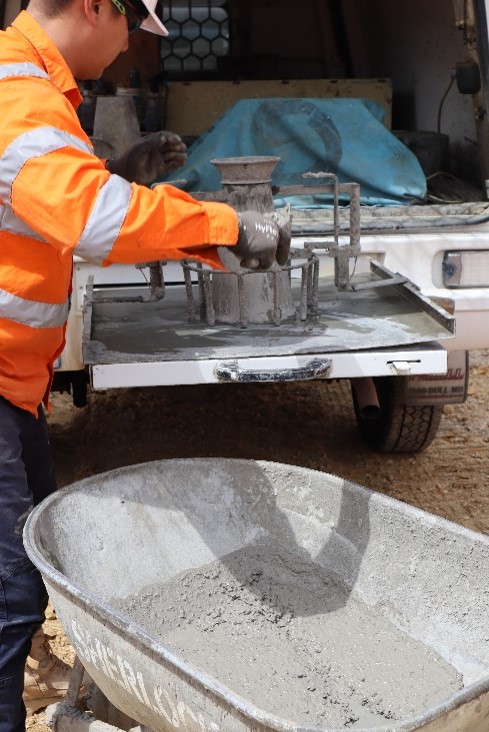

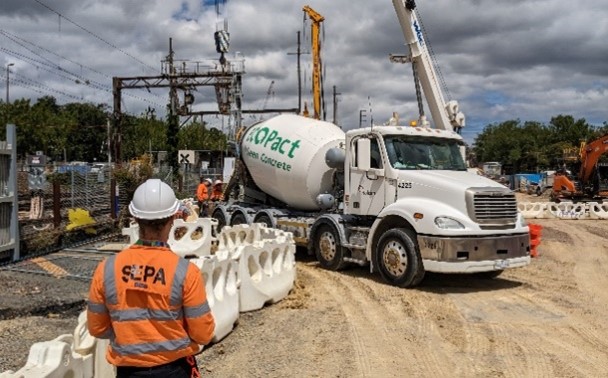
Outcomes and lessons learned
The concrete mix was approved by the Australian Roads Research Board and LXRP for use at UMA, and will be implemented on other upcoming SEPA projects at Bedford Road, Coolstore Road and Dublin Road where 50% of the concrete, or around 18,000m3, will be used for piling.
This is forecast to result in a realised reduction of approximately 4,000 tonnes of carbon emissions, more than half of ‘business as usual’ emissions generated by the 15% SCM mix across the three projects.
The mix is available for purchase across industry through Holcim, and the positive effects of its use are anticipated to scale significantly with LXRP’s scope now encompassing 110 level crossing removals.
‘The 70% SCM piling mix was a great initiative to drive emissions reductions on the project. The effort that went into taking this beyond a good single project outcome was especially impressive. Making it available to the market will maximise the impact of this initiative and help drive the industry towards lower carbon alternatives,’ says Hynes.
Laing O’Rourke is not just using lower-emissions concrete on the LXRP project.
On the Sydney Central Station Main Works in New South Wales, for example, 51% of the project’s concrete for slabs, walls, beams, blindings and backfill are composed of SCMs. In Western Australia, the team on the Morley to Ellenbrook rail project is currently tracking at 46.9% across the construction of 21kms of track and 5 stations, and is sharing further learnings with the Byford Rail Extension project as well.
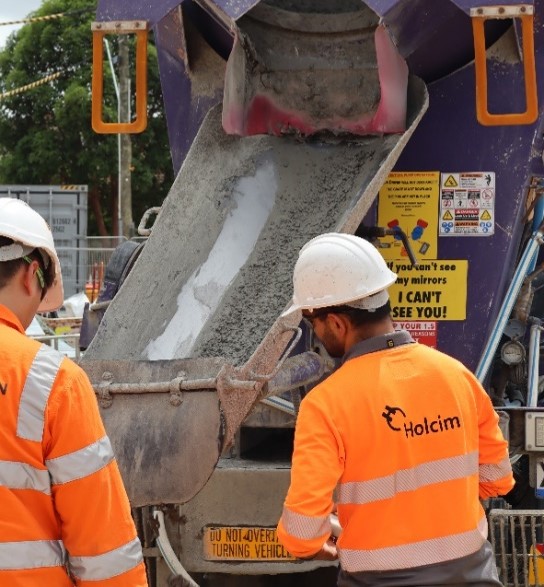
Conclusion
The achievement of a scalable alternative to traditional concrete mixes at SEPA represents an important advancement in Laing O’Rourke’s low-carbon materials journey towards a more sustainable future, and highlights the power of collaboration in incentivising areas of real materiality to reach sustainable outcomes. Being available for industry-wide purchase, its application on infrastructure projects is expected to enable significant carbon emission reductions.
A tangible example of decarbonising the Built Environment under the company’s Global Sustainability Strategy, SEPA’s 70% SCM mix gives confidence to our clients that sustainable engineering is central to Laing O’Rourke’s offering of certainty and leadership in innovation and excellence across its projects, the communities that they serve and the broader industry.




